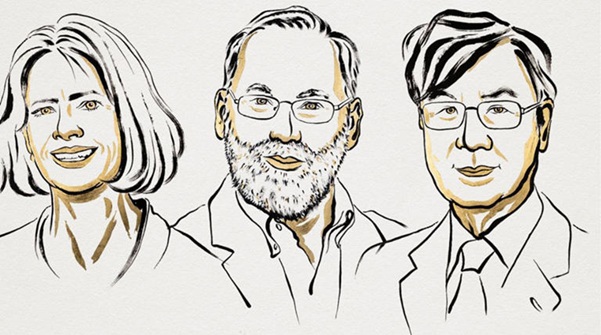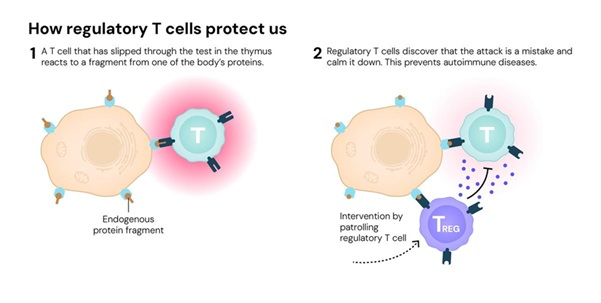Recognition for Revolutionary Discoveries in the Immune System
- The 2025 Nobel Prize in Physiology or Medicine has been awarded to Mary E. Bruncko, Fred Ramsdell, and Shimon Sakaguchi.
- They were honored for their pioneering work on Peripheral Immune Tolerance, a fundamental mechanism that prevents our immune system from attacking the body’s own tissues.

Nobel Laureates
- Mary E. Bruncko – Senior Program Manager, Institute for Systems Biology, Seattle, USA.
- Fred Ramsdell – Scientific Advisor, Sonoma Biotherapeutics, San Francisco, USA.
- Shimon Sakaguchi – Distinguished Professor, Immunology Frontier Research Center, Osaka University, Japan.
- Citation: "For their discoveries concerning peripheral immune tolerance."
- Essence of the Discovery: Regulatory T Cells and Foxp3 Gene

- Their collaborative research identified Regulatory T cells (Tregs) — specialized immune cells that act as “guardians” to prevent the immune system from mistakenly attacking the body’s own cells.
- The discovery of the Foxp3 gene revealed its crucial role in the development of Treg cells and in controlling immune tolerance.
Understanding the Immune System
- Our immune system protects the body from countless pathogens daily.
- It must also distinguish between “self” and “foreign” cells.
- Imbalances in this system lead to autoimmune diseases.
- The laureates’ research focused on the peripheral tolerance mechanisms that maintain this balance.
Key Discoveries and Timeline
Shimon Sakaguchi’s Discovery (1995)
- Challenged conventional views on immune tolerance.
- Identified a new class of immune cells, later called Regulatory T cells (Tregs).
- These cells suppress harmful immune responses and prevent autoimmune diseases.
Bruncko & Ramsdell’s Discovery (2001)
- Identified the Foxp3 gene, which plays a central role in immune system regulation.
- Showed that mutations in this gene cause severe autoimmune disorders in humans and mice, such as IPEX syndrome.
Combined Discovery (2003)
- Sakaguchi demonstrated that the Foxp3 gene is essential for the development of Treg cells.
- Treg cells act as “monitors” of the immune system, ensuring that immune responses target only pathogens and not the body’s own tissues.
Impact on Medicine and Future Directions
The discoveries of these laureates have opened new avenues in medical science:
- Treatment of Autoimmune Diseases: Research is ongoing to target Treg cells for treating conditions like Type-1 Diabetes, Rheumatoid Arthritis, and Lupus.
- Cancer Therapy: Strategies are being developed to manipulate immune tolerance to enhance the body’s ability to fight cancer cells.
- Organ Transplantation: Treg-based therapies could reduce organ rejection by promoting immune tolerance.
Key Facts about the Nobel Prize 2025
- Prize Amount: 11 million Swedish Kronor (equally divided among the three laureates)
- Awarding Institution: Nobel Assembly at the Karolinska Institute
- Significance: The research has reshaped modern immunology and laid the foundation for the next generation of immunotherapies.
About the Nobel Prize
The Nobel Prize is one of the most prestigious international awards, given for exceptional contributions in science, literature, and humanitarian efforts.
Founder:
- Alfred Nobel, inventor of dynamite, established the prize in his will.
- The first Nobel Prize was awarded in 1901.
Prize Categories:
- Physics – Discoveries in natural laws and physical sciences.
- Chemistry – Outstanding achievements in chemistry.
- Physiology or Medicine – Exceptional contributions to medicine and biology.
- Literature – Literary excellence and contribution to human culture.
- Peace – Global peace, conflict resolution, and human rights.
- Economic Sciences – Outstanding contributions to economic science (established in 1968).
Prize Process
- Nomination:
- Eligible individuals or institutions worldwide can be nominated.
- Details of nominees are kept confidential.
- Selection:
- Expert committees review nominations and select the laureates.
- Award Ceremony:
- Held on 10 December in Stockholm, Sweden.
- The Peace Prize is awarded in Oslo, Norway.
Components of the Prize:
- Diploma (Certificate): Shows the laureate’s name and contribution.
- Medal: Special design for each category.
- Cash Prize: Financial reward for the laureate.



